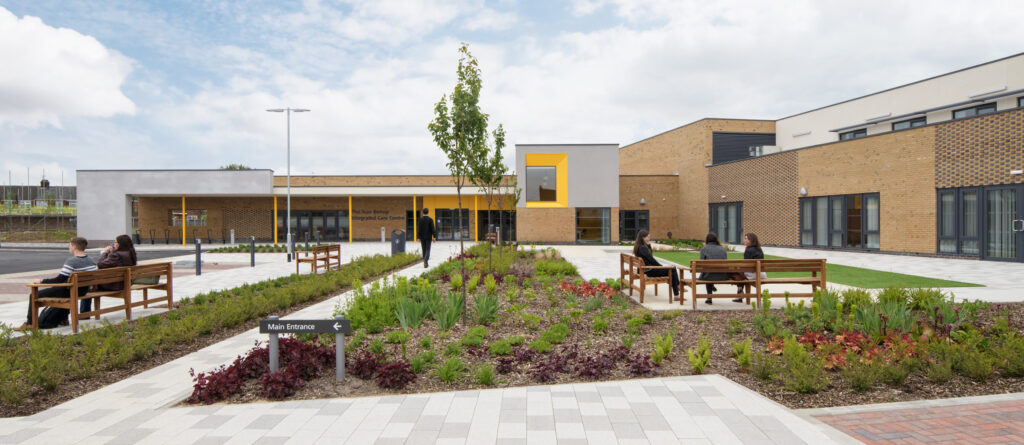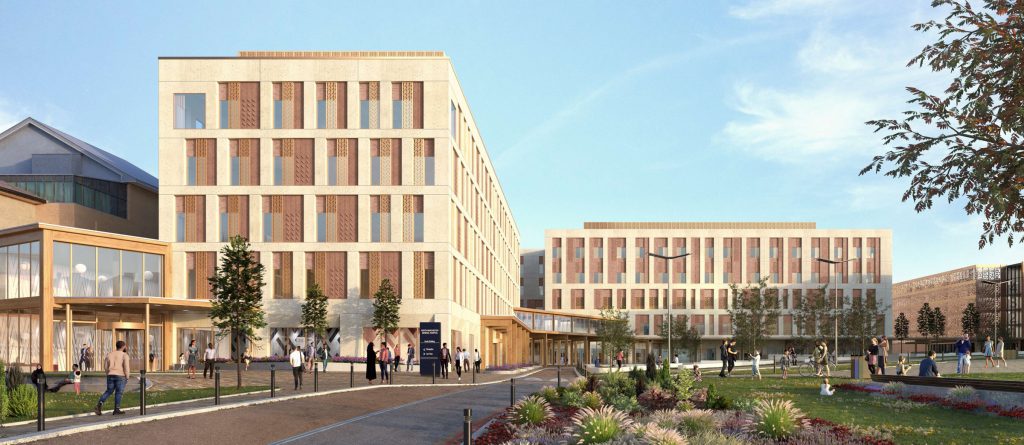
National Hospital for Neurology and Neurosurgery
A strategic programme of refurbishment to create calming environments to work and heal.

Location:
Bloomsbury, London
Client:
University College London Hospitals NHS Foundation Trust
Type:
Acute Health
Role:
Architect, Health Planner, Interior Designer, BIM Coordinator
Value:
£12,000,000
Completed:
2018
Size:
1,200 m²
This piece of work involved a phased series of complex refurbishment projects to increase capacity and reduce waiting times at the UK’s largest dedicated neurological and neurosurgical hospital. Each phase of work at this 160-year-old institution required careful design to overcome the challenges of limited space, limited infrastructure and survey information, asbestos, and construction alongside live, acute clinical services. Improvements, including sympathetic alterations to a Grade II Listed Building, were carefully developed to achieve planning consent within the Bloomsbury Conservation Area in central London.
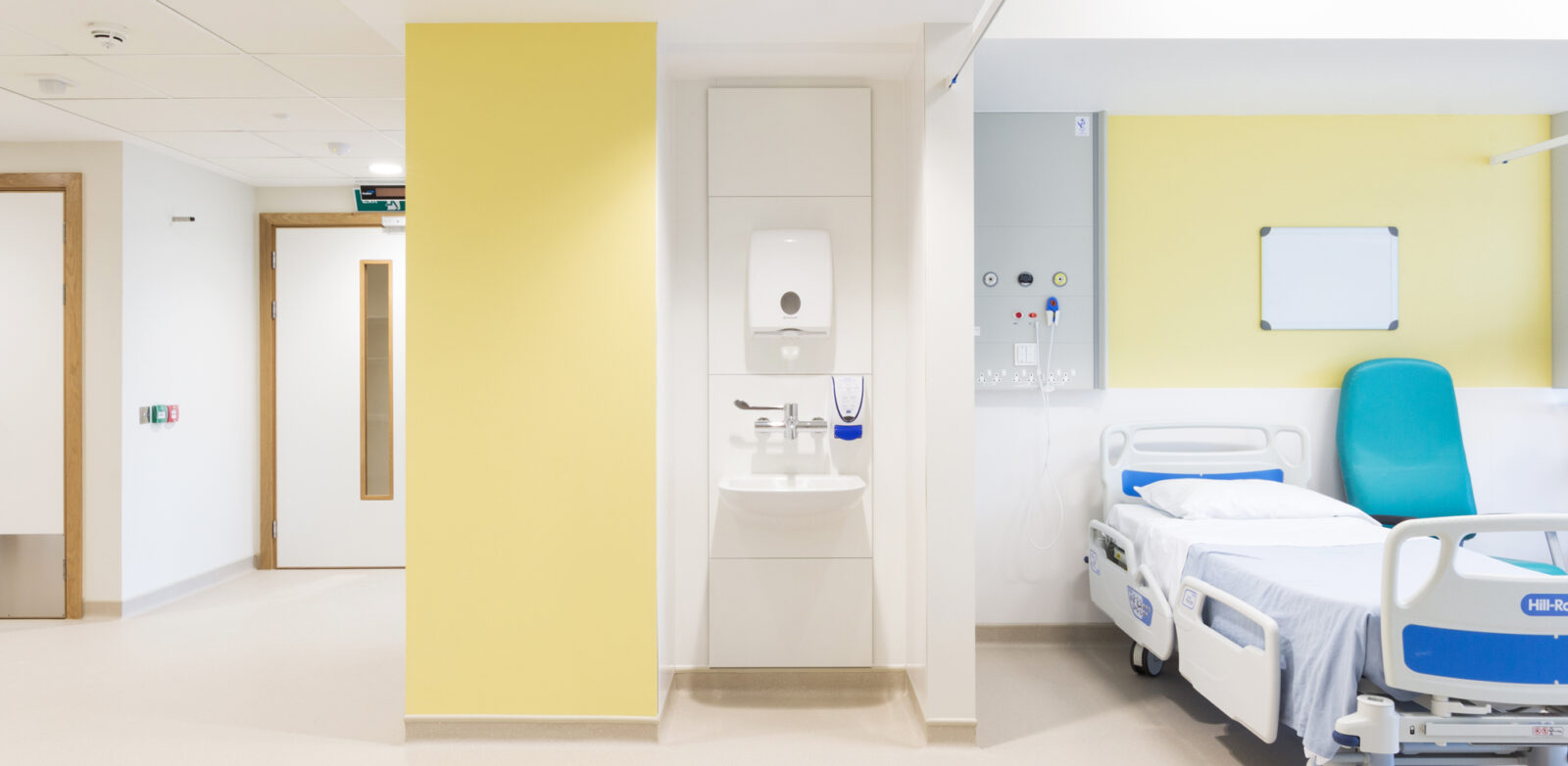
A variety of colours and timber elements bring warmth to the clinical area.
Strategic vision to deliver long term value
To ensure that the planned series of projects would represent financial, environmental, and social value, we developed a long-term vision and a high-level estate strategy for this leading specialist hospital.
We explored the site’s maximum clinical capacity, to map the strategic future of the site and ensure any immediate work would support longer-term plans. This informed proposals for several strategic projects including: relocating the UK’s only dedicated neuromedical intensive therapy unit, a new high dependency unit, 40 additional beds in three new wards, a relocated angiography suite, relocated neurosurgeons’ offices, and enhanced electrical infrastructure.
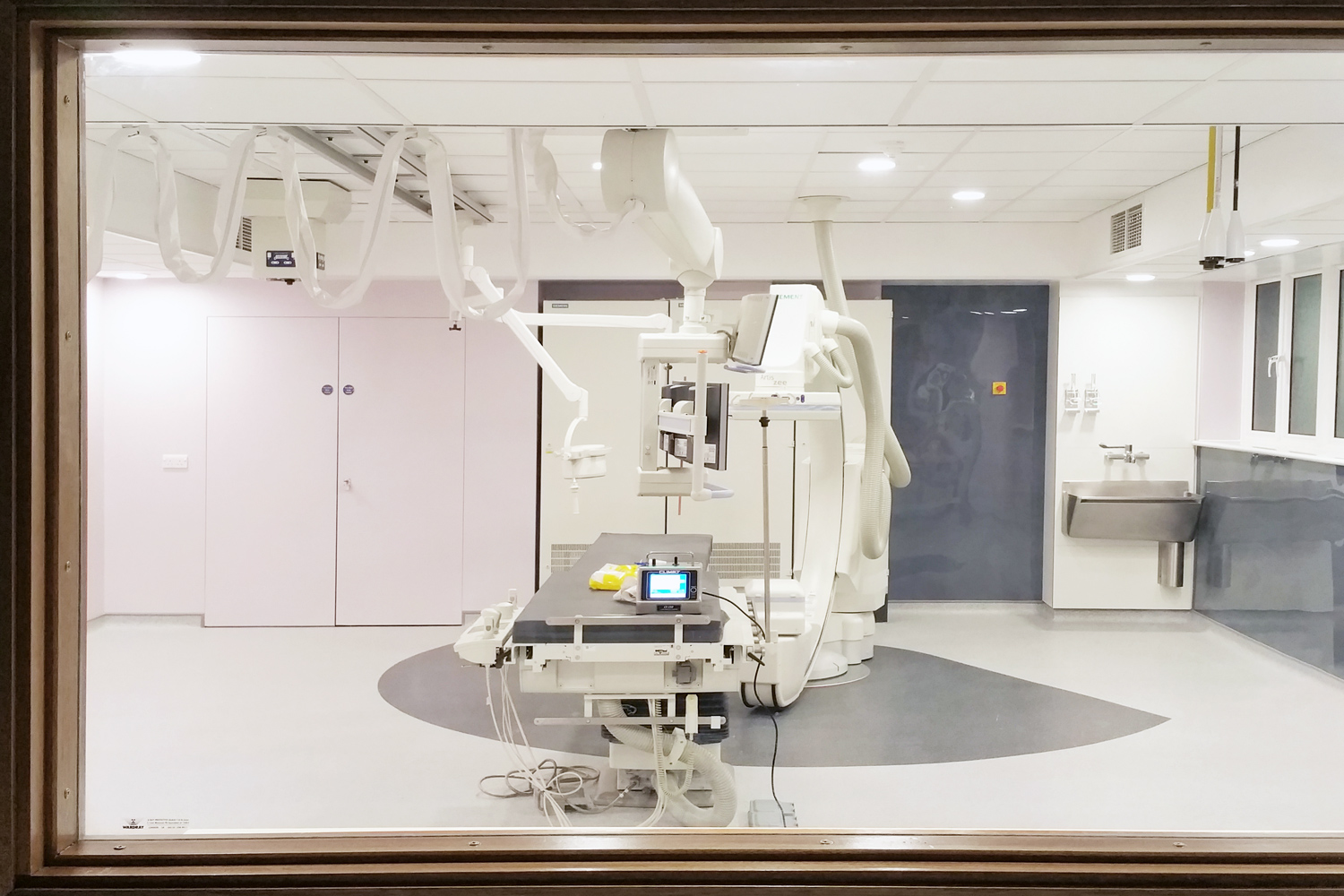
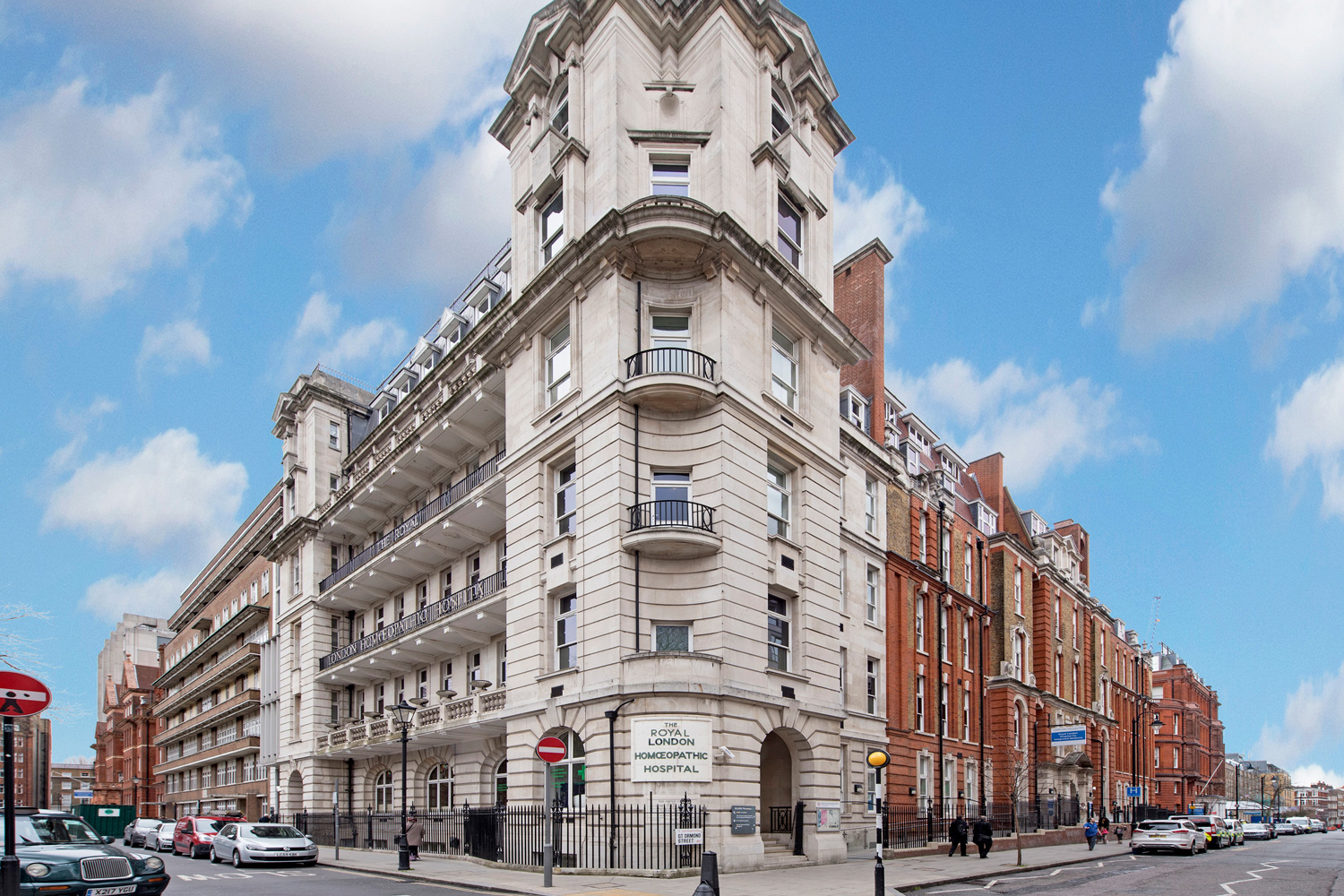
Careful coordination was required to relocate the angiography suite below 8 storeys of existing clinical accommodation in a building dating back to the 1930s.

Entrance to an isolation suite within the new medical intensive therapy unit.
Thank you for taking all our comments and concerns on board and creating something that is looking very patient-centred, with good working space.
Effective delivery through standardisation and coordination
In such a complex phased programme with multiple consultants and stakeholders, we understood the need to coordinate a consistent approach. We started by collaborating with the Trust to define a design standardisation programme. Benefits included improved buying power, efficient facilities management, and visual consistency of design within the hospital.
We worked with the Trust to identify how BIM could be utilised, in a way that was practical and beneficial for the project team, and which offered long-term benefit to the Facilities and Estates Management Team.

BIM was an integral tool in communicating the design intent with the client and project team.
A typical bedroom and ensuite bathroom.
A calming environment that promotes healing
Compared to spaces prior to its refurbishment, the interior is designed to be free of clutter, with cupboards and recesses located along corridors to ensure equipment remains accessible without being obstructive. The arrangement of spaces exploits daylight and views to the mature trees of the adjacent London Square.
Through close consultation with the Infection Control team, we specified natural materials and integrated artwork to soften what could have been an ‘overly clinical’ interior. Bespoke manifestations based on an abstract pattern of neural circuits, balance the need for privacy and views, whilst creating points of interest and contemplation. Different zones are differentiated by a suite of distinctive and complementary colours, helping to create a homely environment and legible wayfinding.
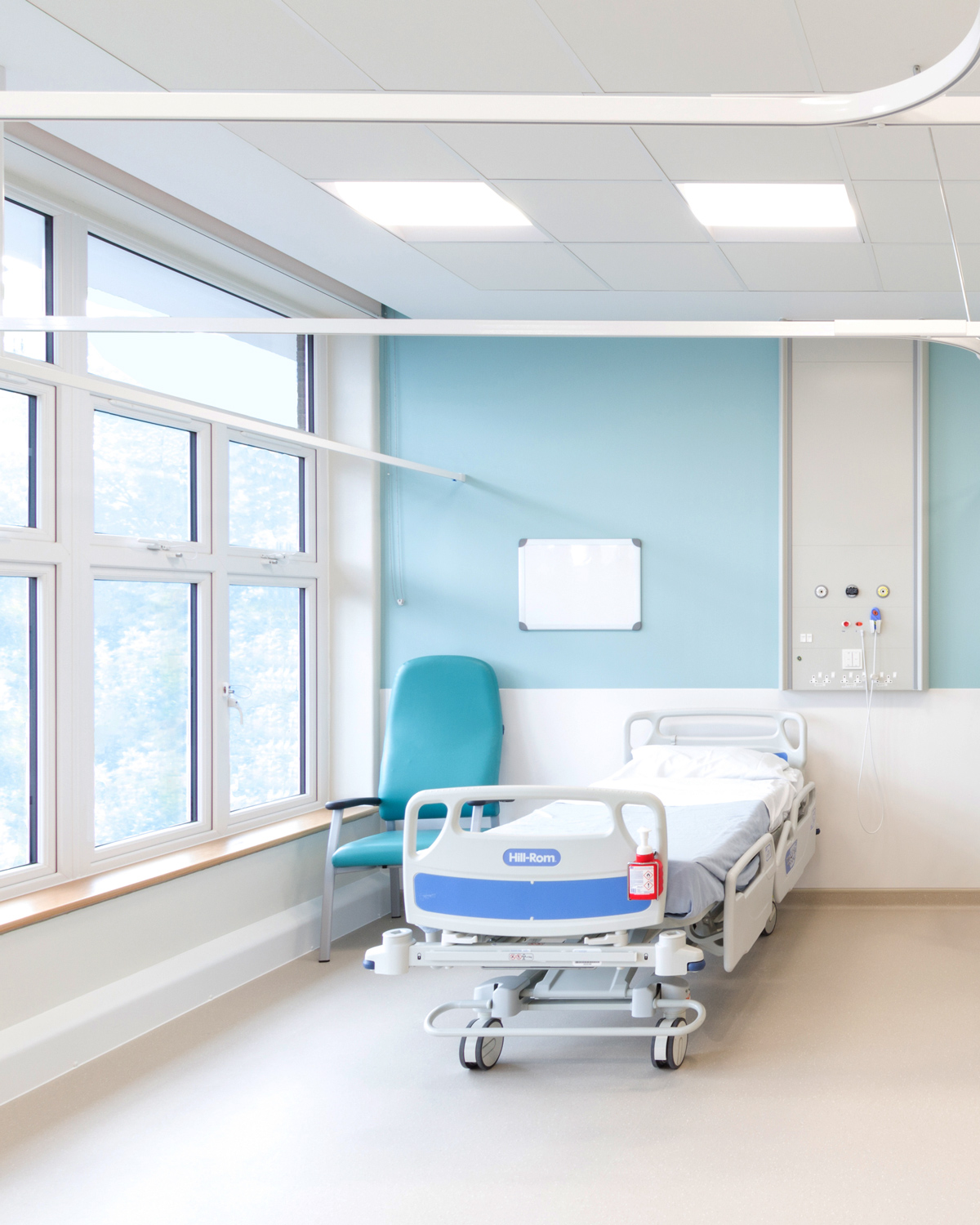
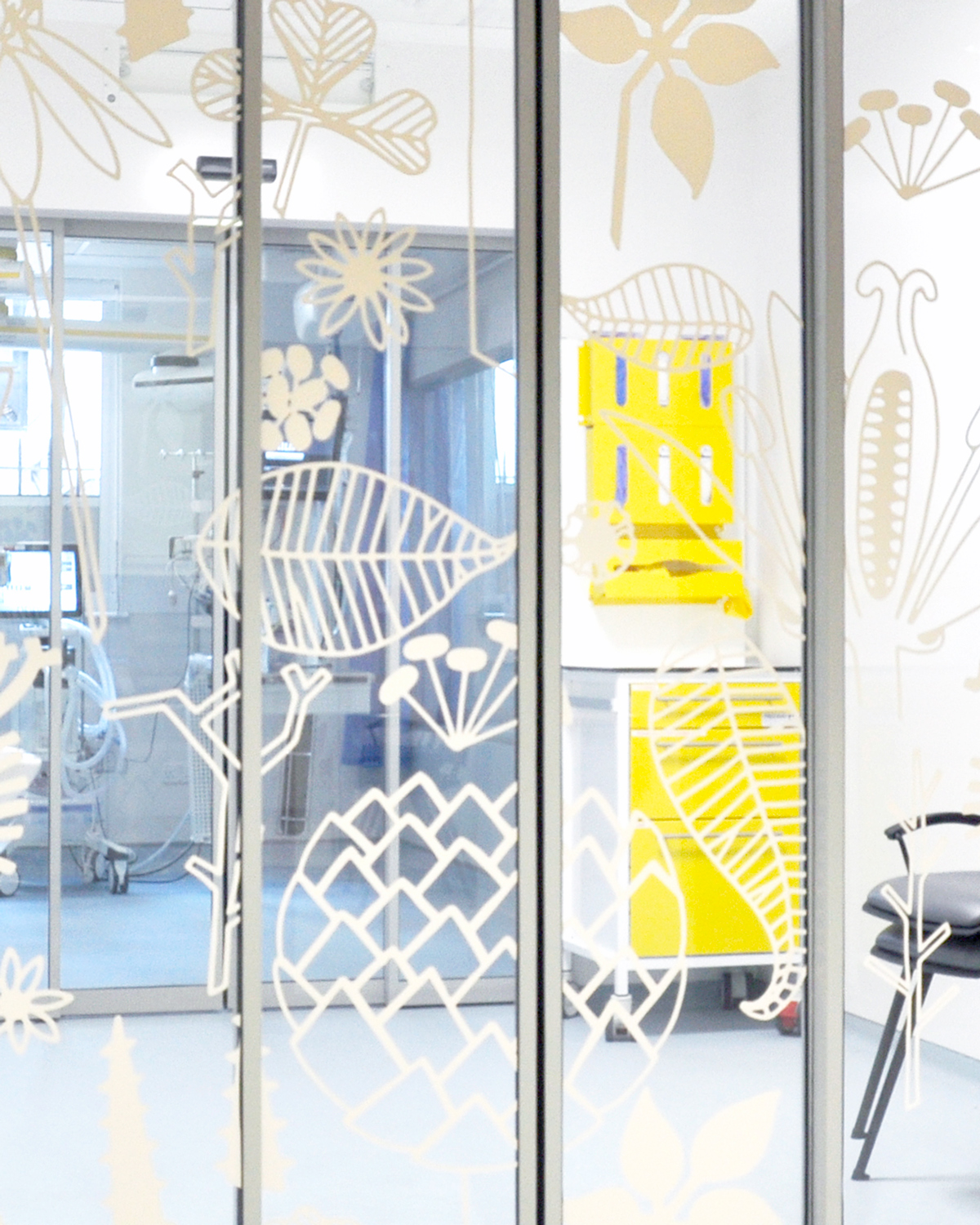
Prioritising external views and considered details such as bespoke manifestations contribute to the healing environment.
Outcomes
The completed programme of work has reduced waiting times and significantly improved the experience for patients and staff within the hospital. A patient satisfaction survey was undertaken on the Queen Mary Wing wards, a major component of the refurbishment works. Patients scored the environment ‘Excellent’.
Project Team

